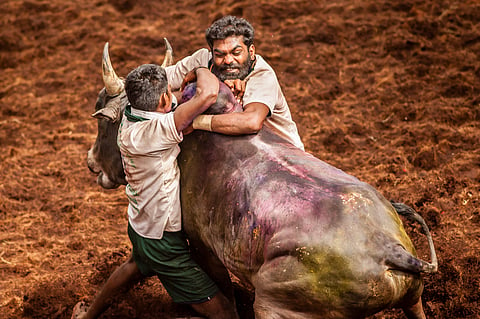Jallikattu, caste, and the pitfalls of adapting the Tamil classic ‘Vaadivaasal’
C S CHELLAPPA, born in 1912, was a pioneer of modern Tamil literature who gave his life not only to his own writing, but also to the harsher task of ensuring that others could write, that they would have able critics, magazines and publishers to submit to, and that a community of contemporaries would assure them that their words were not spit into the void, but rather carefully slotted into a living, growing archive. Among our debts to him are Putu Kuralgal (New Voices), the first modern anthology of Tamil poetry, and the legendary magazine Ezhuttu (Writing), a wispy broadsheet that Chellappa sold door-to-door and to which we owe the emergence and survival of Tamil “new poetry”. These quixotic endeavours kept him in genteel poverty for most of his days and earned him the tributes of other obscure writers. The poet Pramil, this line’s finest talent, discovered modern Tamil poetry through Ezhuttu when he was a teenager in Trincomalee, a small port town on Sri Lanka’s northeastern coast and something of a backwater. His first poems, the first of what would become Tamil new poetry’s coruscating peak, were published there. “Its design got its force from refusing the usual magazine ‘attractions,’ and its clarity assailed my mind,” he wrote. “To eyes that had never seen a Tamil magazine with no pictures it was a challenge, a declaration.”
Chellappa was also a zealous Gandhian, a militant nationalist who did jail time for the cause of Indian independence in the 1940s. In the latter part of his life – he lived to be 86 – the Freedom Fighters’ Pension Scheme would prove an indispensable source of income, although he refused it initially as a betrayal of his honour. It was not the only reward he viewed with disdain. He refused the Raja Rajan Award from the Tamil University in Thanjavur, in Tamil Nadu. In 1995, he refused the Villaku – “lamp” – prize, awarded by an organisation of the American Tamil diaspora, changing his mind when he realized he needed the money to publish a book. Had he been alive on receiving the Sahitya Akademi Award, which he did in 2001, he would probably have turned that down too.

